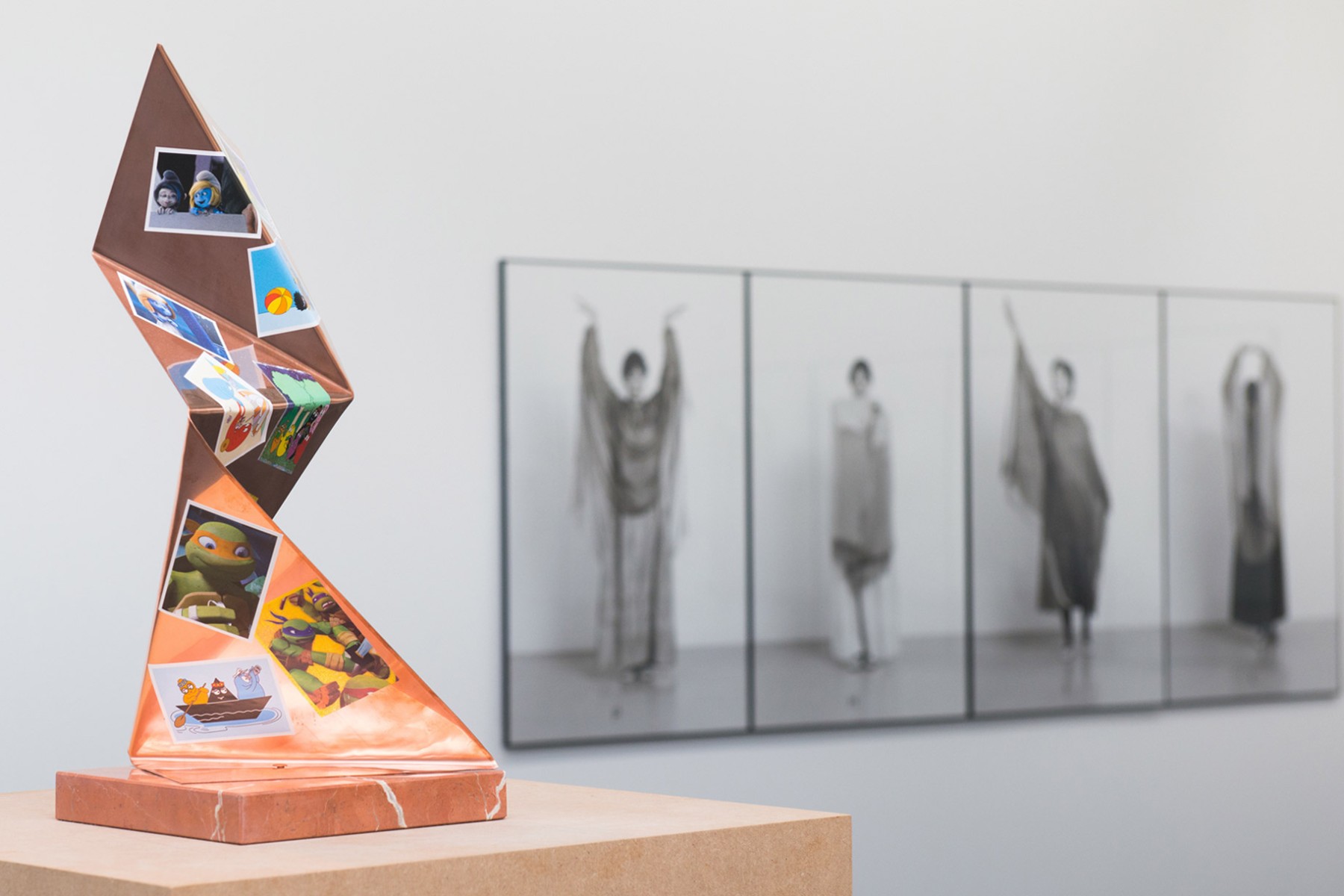Closets/Containers
On Two Recent Paintings by Jacob Todd Broussard
Written by Adam Thibodeaux
I meet with Jacob Todd Broussard for a short conversation in his studio, a former science classroom in the basement of a converted Catholic elementary school. It’s much bigger than a closet but from the outside it could be mistaken as one, almost forgotten in a corner of the building next to a large vacant space that he tells me was once the school library. I ask if he finds the space lonely, but he smiles–productive, not lonely, he says.
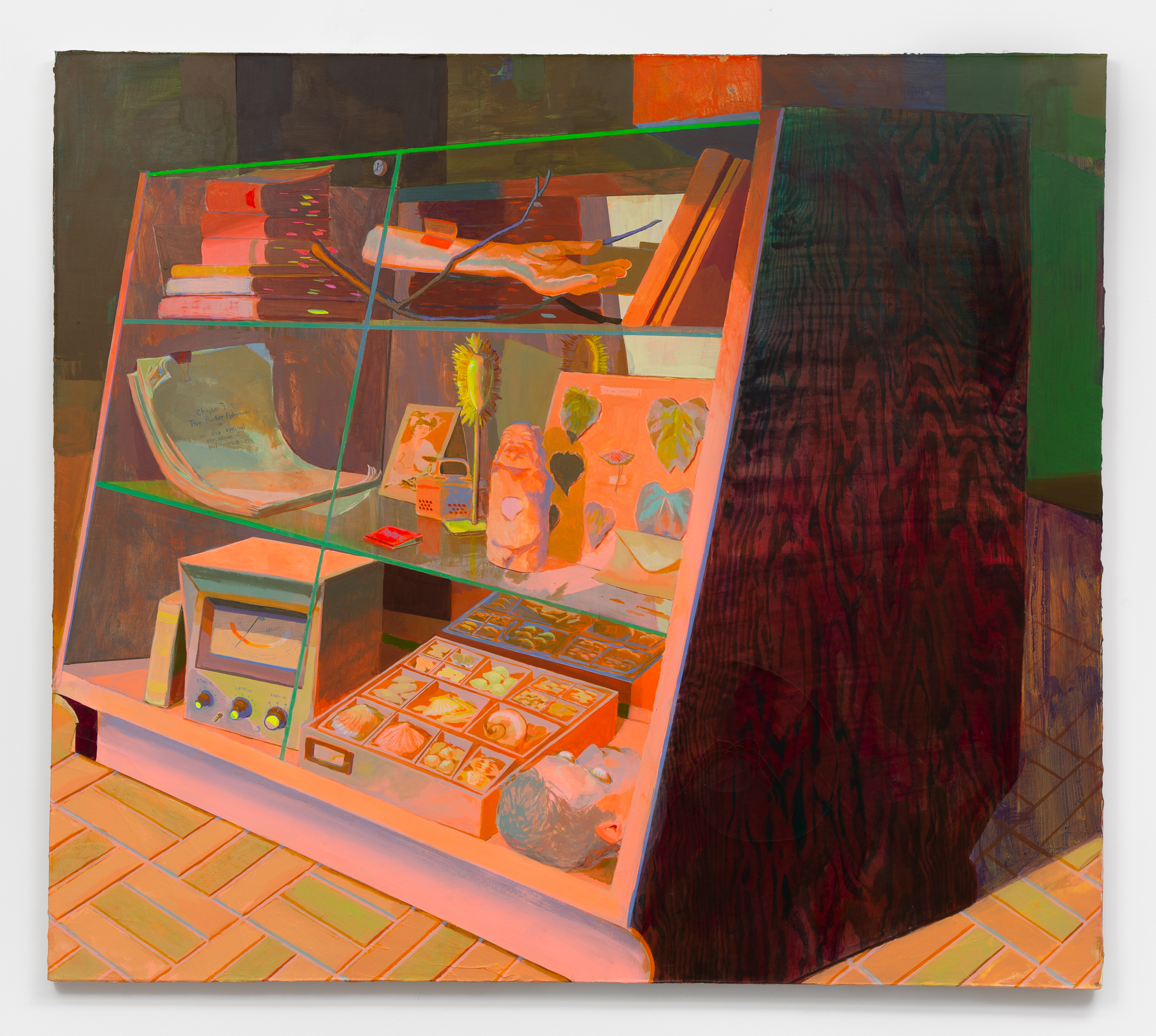
In conversation about Tomb of the Unknown Hermit and Interior Castles Second Mansions, our discussion lingers on the idea of containment. Literally, he paints containers of various scales: a glass display case, a nondescript chapel on a hill, or a sea shell. An easy read is the analogous closet–queerness kept shut, interiorized and stalled in its isolation. But for Broussard, the container is a space of fermentation, of self discovery. We speak about mystic lights, bioluminescence generated by organic matter in dense swamps, or the natural world becoming defamiliarized through mystical intervention. Much like the physical space of Broussard’s studio, these containers straddle the quantifiable and qualitative against the subjective nature of painting and the spirit.
We speak of the hermit performing a ritual self-dissection of the body. Like the saintly body, his shut-in is prone to attributes evoked by a sort of magic. These themes move through Broussard’s work in run-on sentences; an ambiguous light source in one painting is identified in another as emanating from the petals of a flower, whose leaves are now on display here in the reliquary of the aforementioned hermit. In all cases, the container imagines the “closet” as a site of divination: a place of isolation in which the mystic is able to receive a vision.
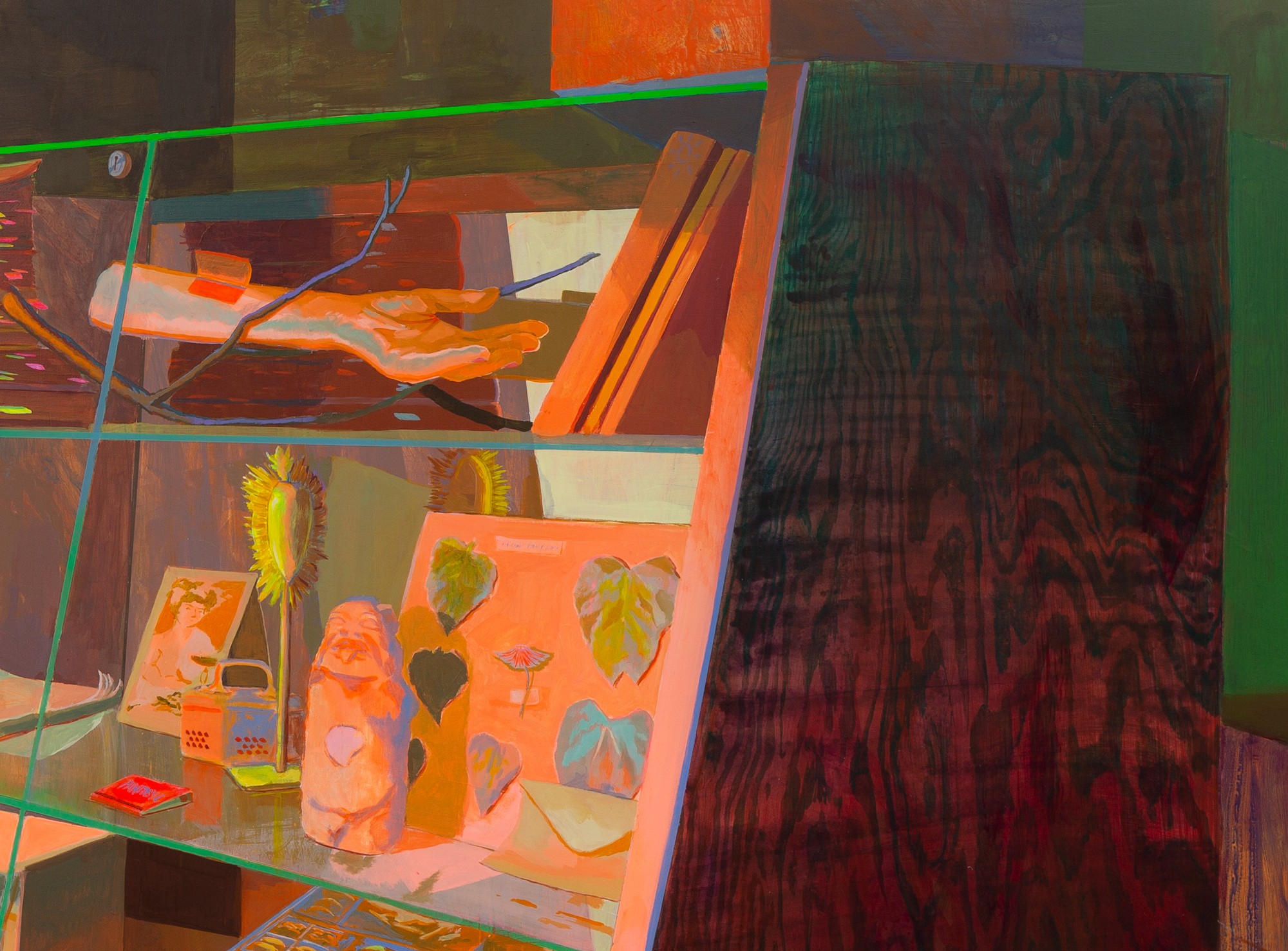
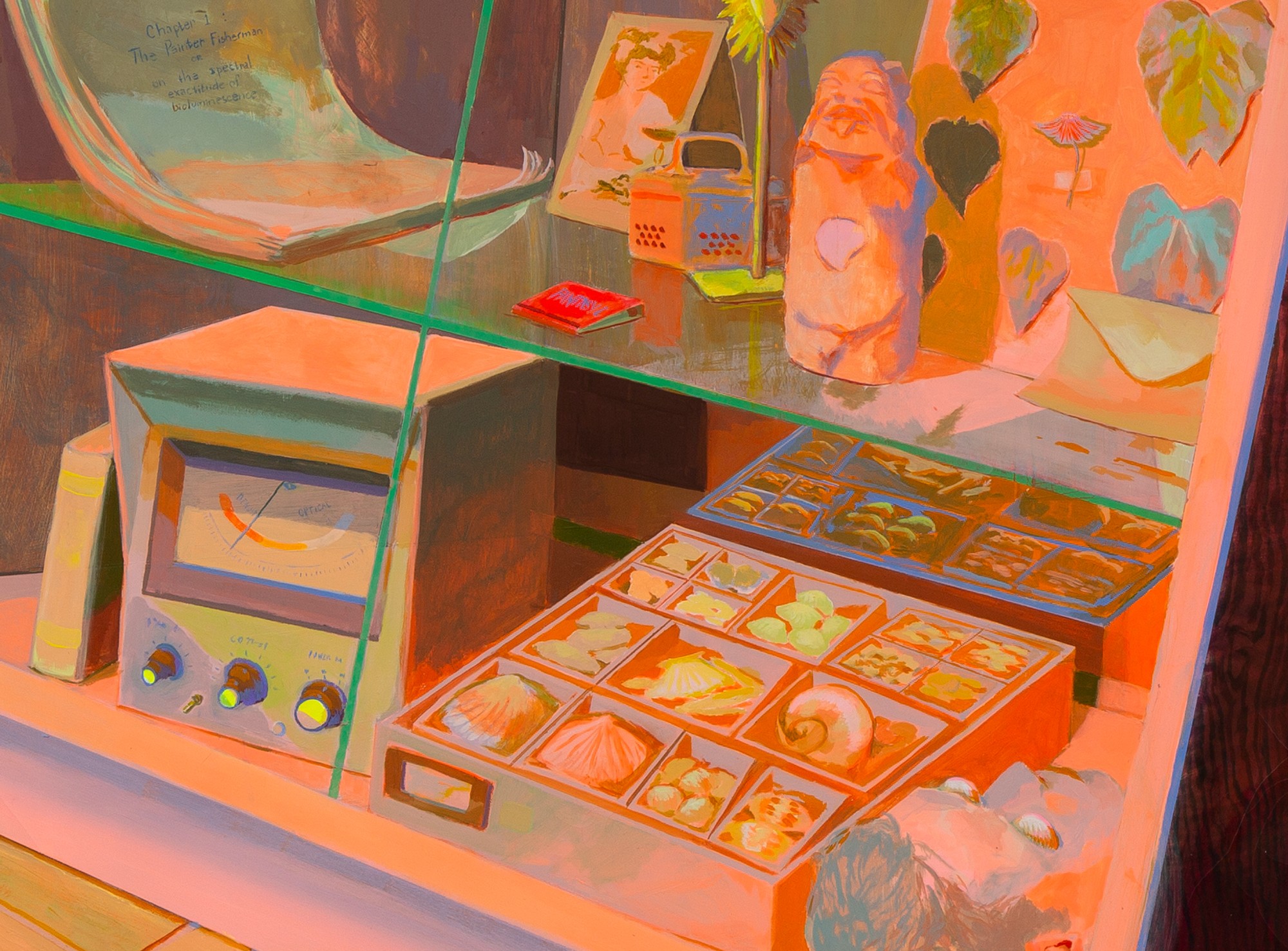
In Fantasy II in Exile, Broussard’s recent show at the Acadiana Center for the Arts with collaborator Emile Mausner, the memory of a forgotten gay bar holds space for a collective containing. In these more recent works, however, Broussard re-orients towards a more familiar, individualized containment: that of the hermit. He alternates between interiority (an isolated chapel without windows) and exteriority (a glass display case, presumably located inside the chapel). It is unclear whether the viewer’s presence is welcome or forbidden, creating a voyeuristic unease in the private made public.
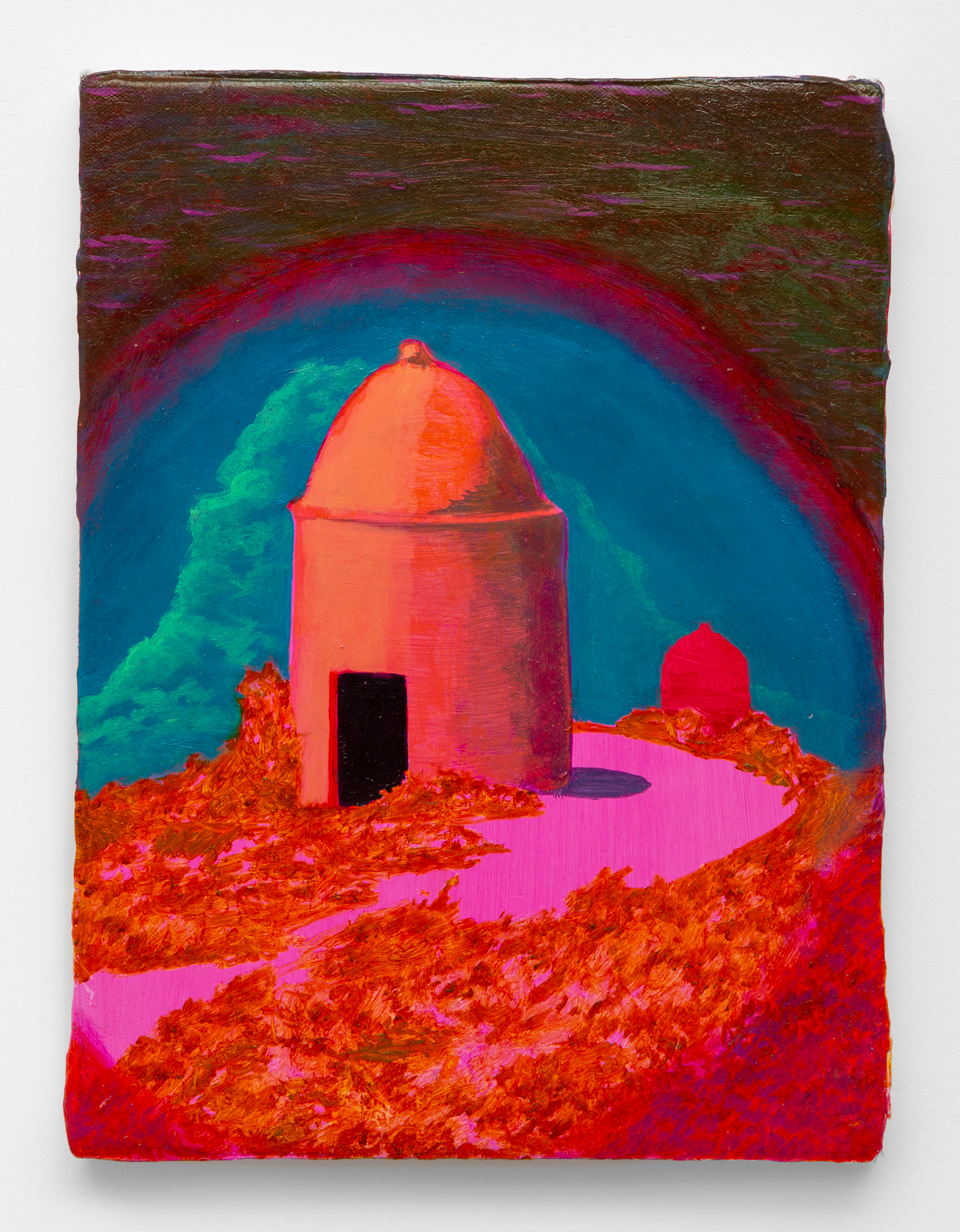
It is worth noting that while Fantasy II created an imagined space to commune with queer ancestors, the show’s opening in Lafayette, Louisiana saw few patrons of its namesake in attendance. For Broussard, this absence was familiar. Many Cajuns of a younger generation grow up without mentors–patron saints, as they are taught in Catholic school. As such, many queer Cajuns find their own saints elsewhere: the medicinal healer across the street, or the pop star on the radio. Broussard, as an artist, has found patron saints of his own, and his paintings can be read as their own reliquaries to these imagined ancestors. In his paintings, Broussard chases the same mysterious light in the swamp that the hermit does. Their methods are divergent, but perhaps the visions they receive are less so.
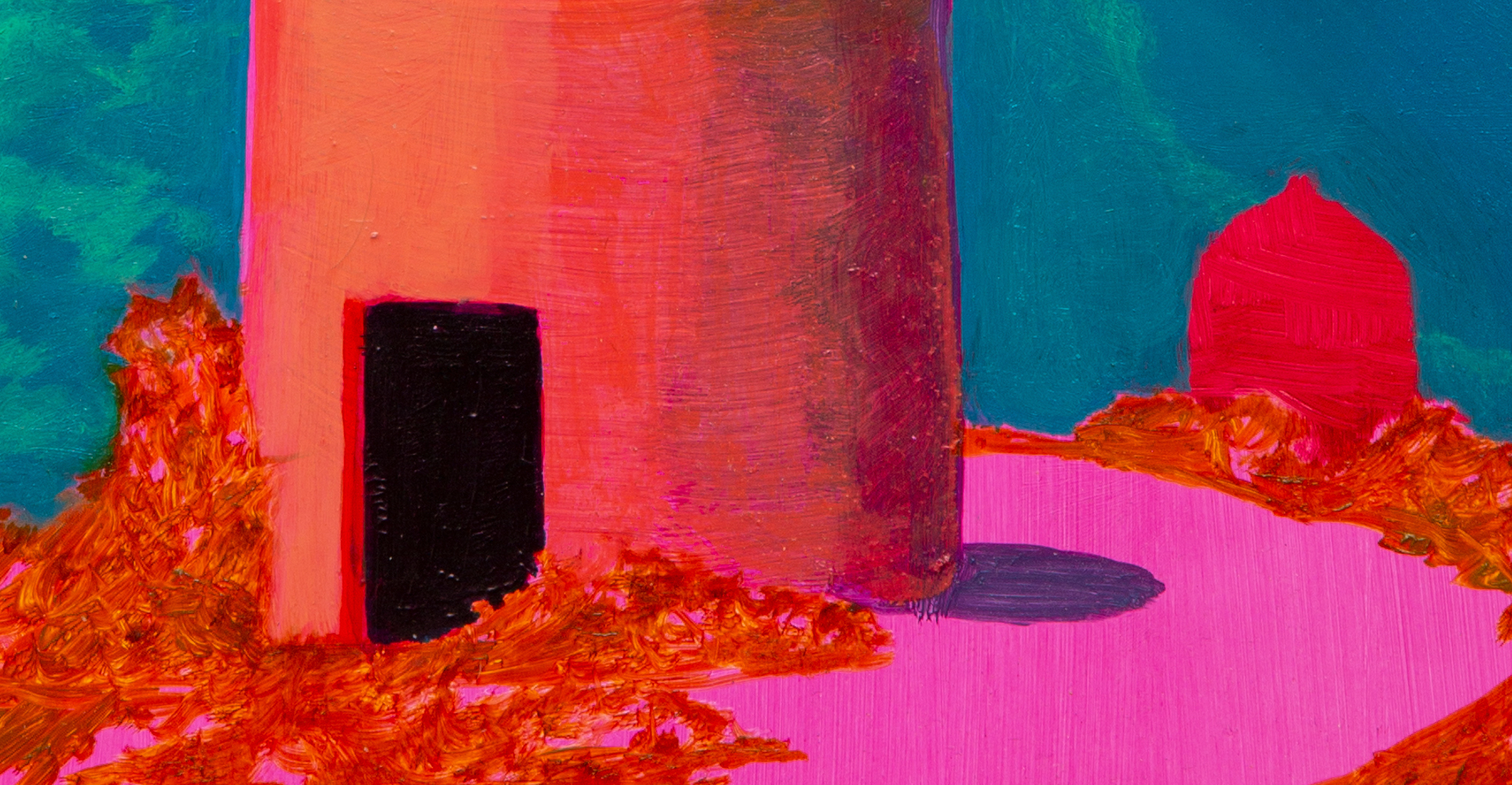
Adam Thibodeaux is an architect and educator based in Buffalo, NY. His work focuses on the uncovering and reclamation of spaces that once sheltered populations marginalized by difference.
Related articles
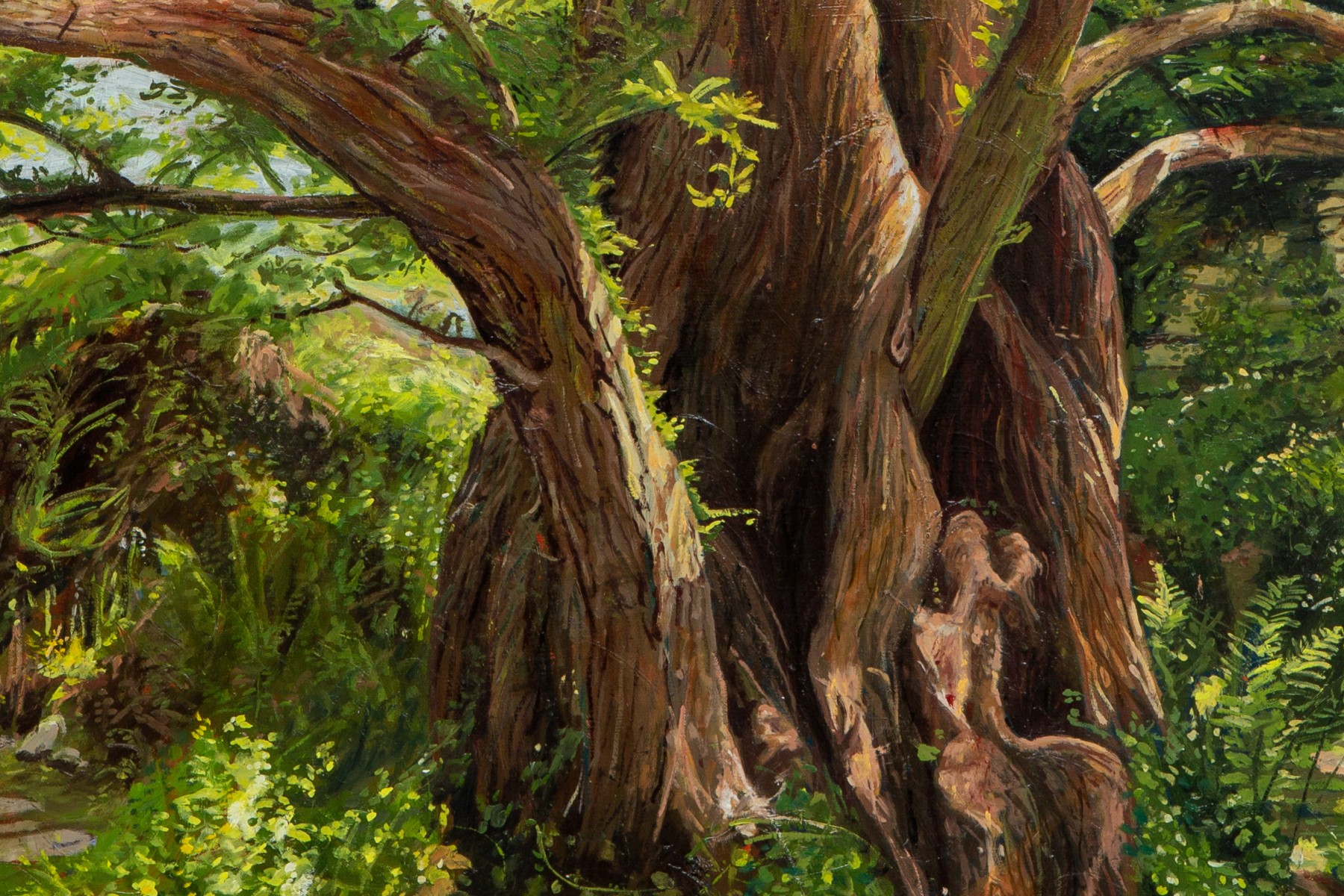
Argenteuil
On Two Recent Paintings by Tristan Unrau
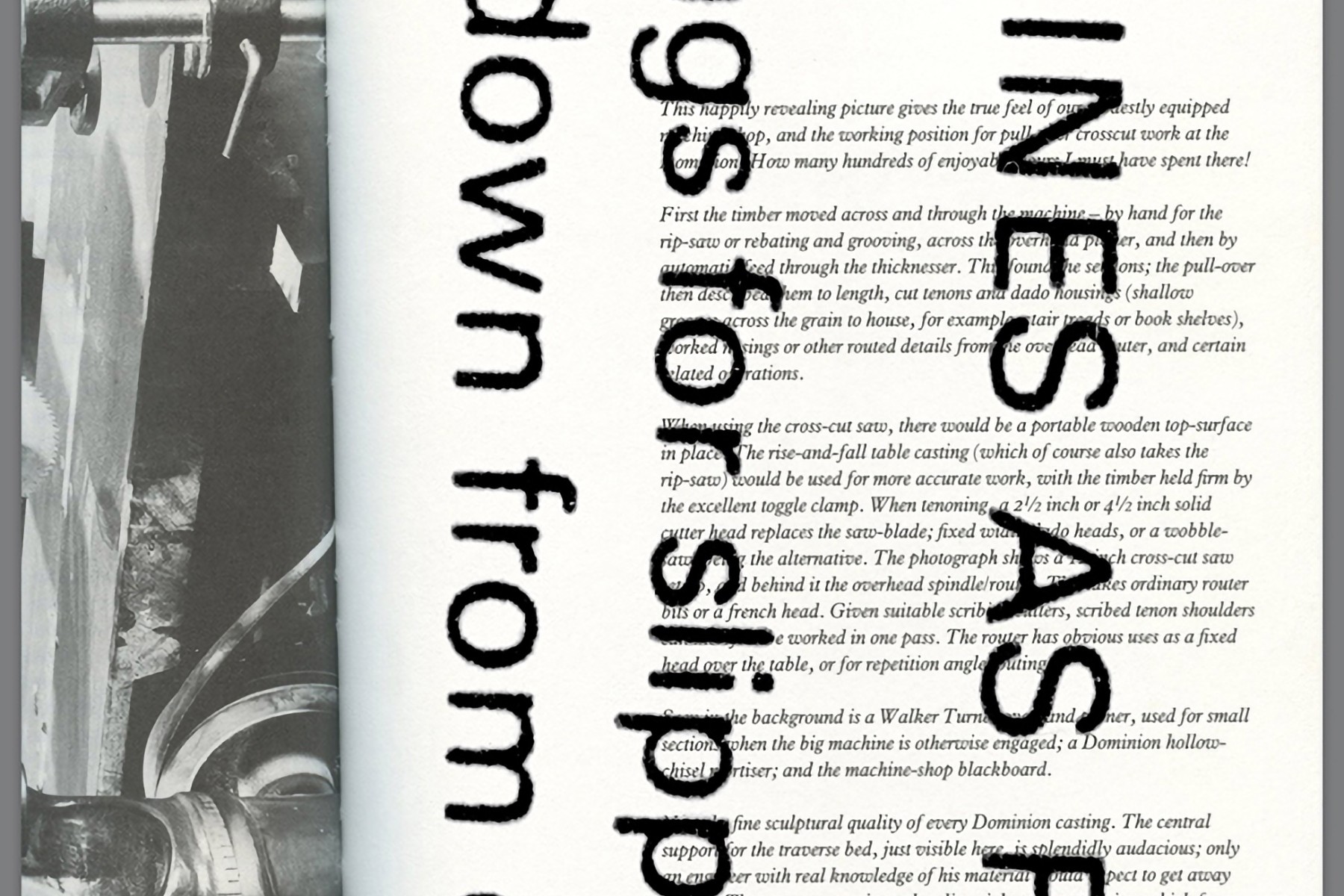
A Stand In For The Thing
In Conversation with Liam Crockard
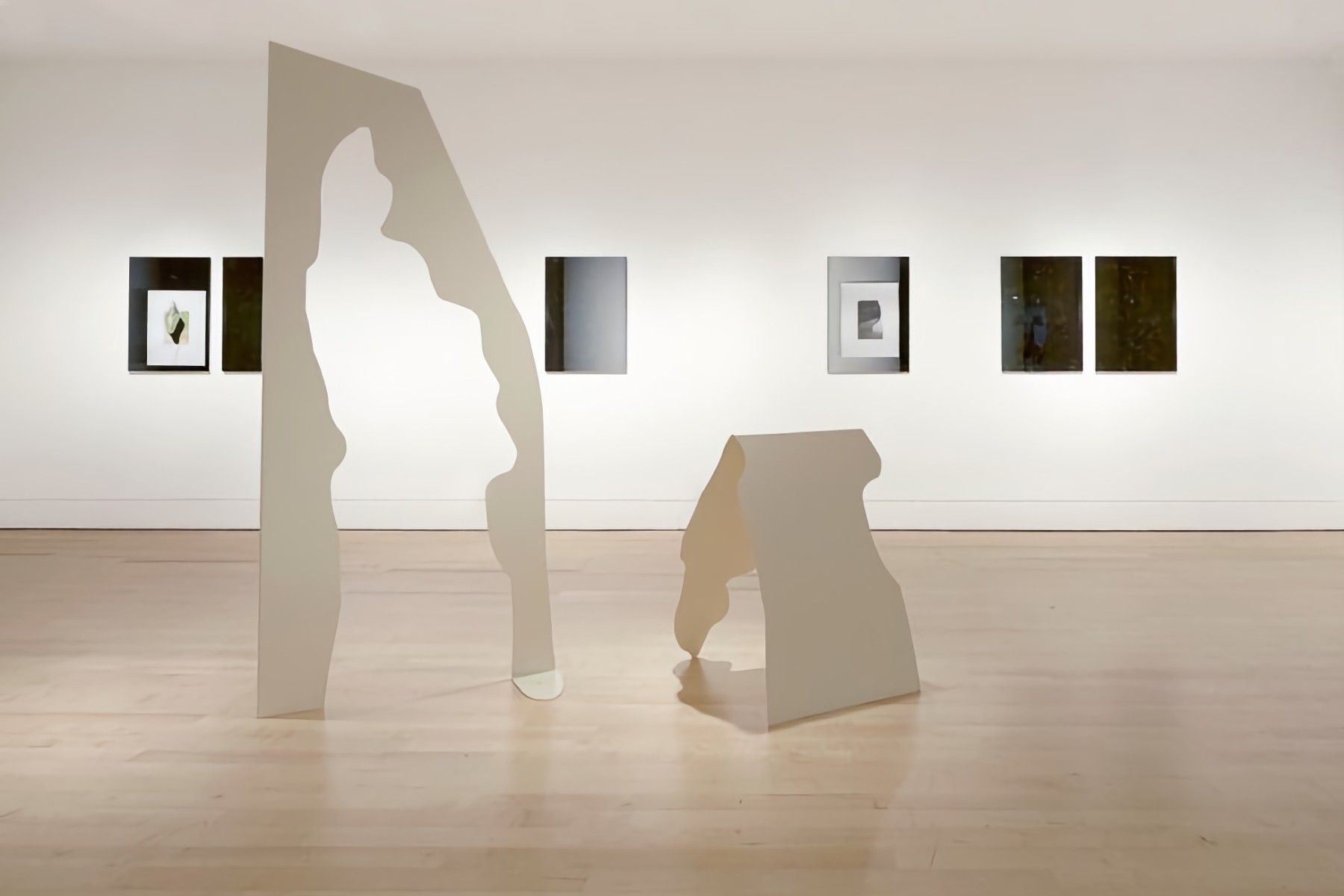
Flattening, Flipping, Inverting
Nadia Belerique in conversation with Aryen Hoekstra
